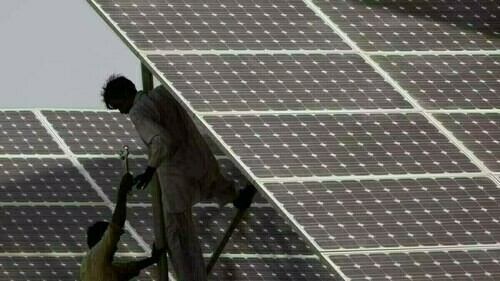Tax on Imported Solar Panels: A Turning Point for Renewable Energy in Pakistan
The imposition of a 10% tax on imported solar panels in the federal budget for 2025-26 has been described by economic observers and proponents of clean energy as a pivotal moment in the country’s shift toward renewable energy. The decision is expected to influence consumers and dealers and could stimulate investment in domestic solar panel production.
The approved 10% levy, a reduction from an initial proposal of 18% following industry feedback, is set to increase panel costs by 8%–10% from July 1, affecting both consumers and dealers. The government asserts that this measure strikes a balance between meeting fiscal demands and sustaining backing for clean energy.
Pakistan has experienced a significant surge in solar energy adoption, becoming the world’s leading importer of solar panels in 2024.
Industry Perspectives
Ali Majid, General Manager for Central Asia, the Middle East, and North Africa at LONGi Green Energy Technology Co Ltd, noted that Pakistan’s solar advancement may face headwinds due to the 10% tax on imported panels.
He stated that a sustained commitment to clean energy, combined with local initiatives to enhance domestic solar manufacturing and streamline supply chains, could help offset the financial implications. LONGi has affirmed its dedication to collaborating with stakeholders by delivering efficient and cost-effective products and solutions to assist Pakistan in maintaining its solar growth path, despite these temporary challenges.
Majid also mentioned that the tax-related price increase will add to the energy expenses for households and industries, but LONGi intends to mitigate this impact.
LONGi’s Strategy
According to Majid, “We’ll utilize our global reach, research and development (R&D) capabilities, and local presence to offer high-performance, reliable solar products at competitive prices.” He added, “By encouraging distributed generation and energy-saving solutions, we aim to lower long-term energy costs, helping both sectors overcome inflationary pressures while still reaping the rewards of solar energy.”
Livoltek’s Viewpoint
Max Ma, Pakistan Director of Sales at Livoltek, commented that the 10% tax would marginally increase solar system costs. However, electricity from the grid remains considerably more expensive and less reliable.
Ma told that while some price-conscious customers may initially hesitate, solar energy remains a more sensible long-term solution, especially with net-metering and financing options available.
He stated, “At Livoltek, our focus is on simplifying this transition by providing high-efficiency inverters and energy storage solutions that maximize the return on investment.”
“Our nationwide support network and after-sales service ensures customers feel secure in their choice of solar. We are confident that the move to clean energy will continue, and Livoltek remains dedicated to making it both accessible and sustainable for Pakistani households and businesses.”
Ma also suggested that this policy could pave the way for local manufacturing, provided it is supported by government incentives, infrastructure investment, and R&D support.
Livoltek, as a global clean energy brand with a growing presence in Pakistan, is already considering localized assembly and partnerships to strengthen supply chain resilience and improve cost efficiency.
Max Ma added, “We are ready to take an active role in developing a stronger local ecosystem. Promoting domestic manufacturing can decrease reliance on imports, generate employment, and stabilize prices. However, this requires a collaborative effort between the private sector and policymakers to transform this into a national success.”
Analyst’s Perspective
Analyst Usman Suhail told that the 10% levy on imported solar panels will likely lead to higher retail prices, creating immediate financial strain on both residential and commercial buyers.
This price surge may temporarily slow down new solar installations, particularly among lower-income households and small businesses that have been key drivers of the recent boom.
Nevertheless, demand for solar energy is expected to remain strong due to persistent grid instability and increasing electricity costs.
“Instead of a widespread return to grid electricity, we anticipate a slowdown in new installations, not a reversal. On the positive side, this action could stimulate significant investment in local solar panel manufacturing, which has struggled to compete with cheaper imports. However, establishing a competitive local supply will require policy support, quality assurance, and technology transfer,” he concluded.
In the short term, price sensitivity could reduce sales volumes, but the fundamental market conditions still favor solar energy in the long run, provided there is consistent policy and incentives for local production.



Comments (0)
No comments yet. Be the first to comment!
Leave a Comment